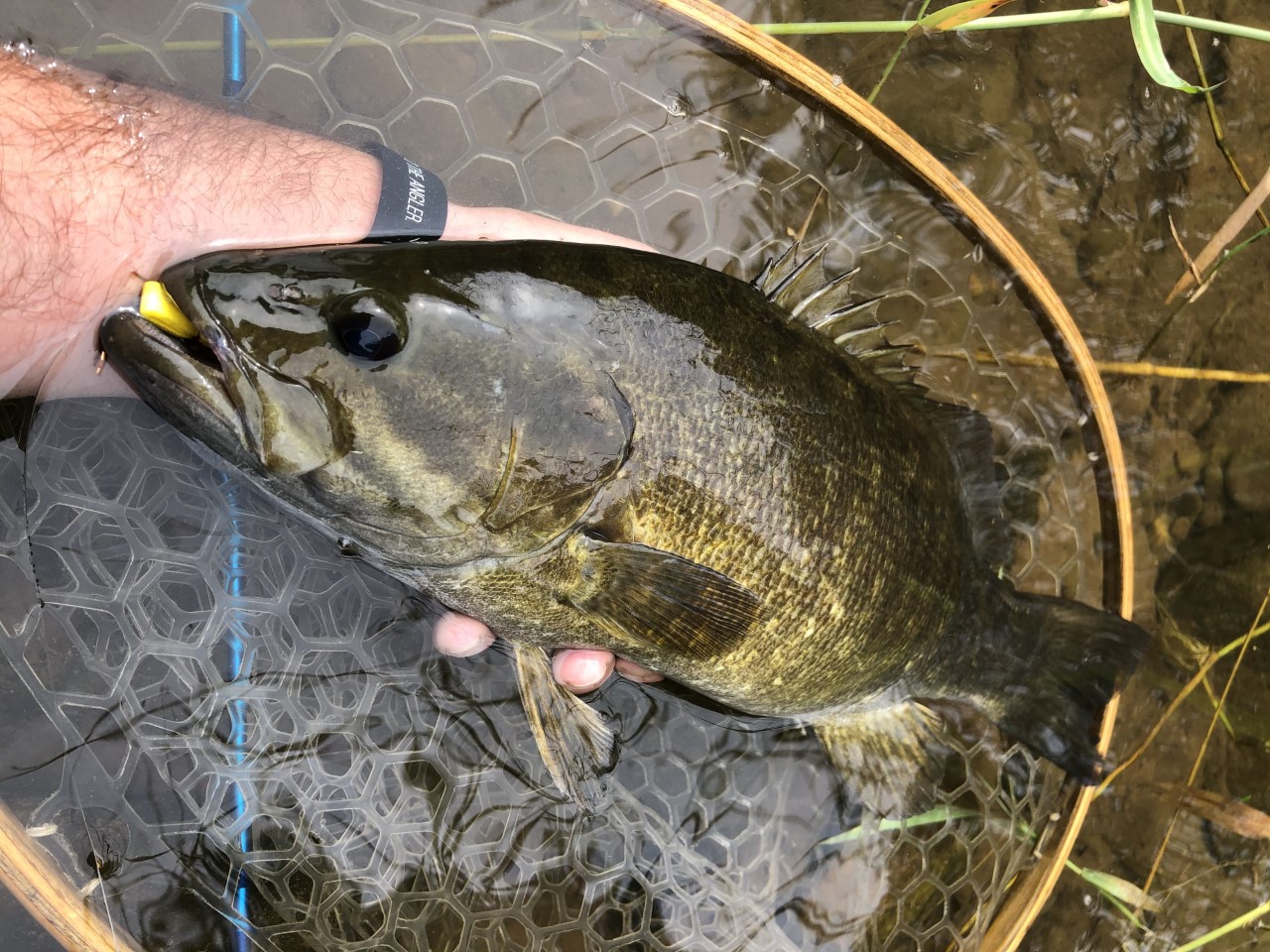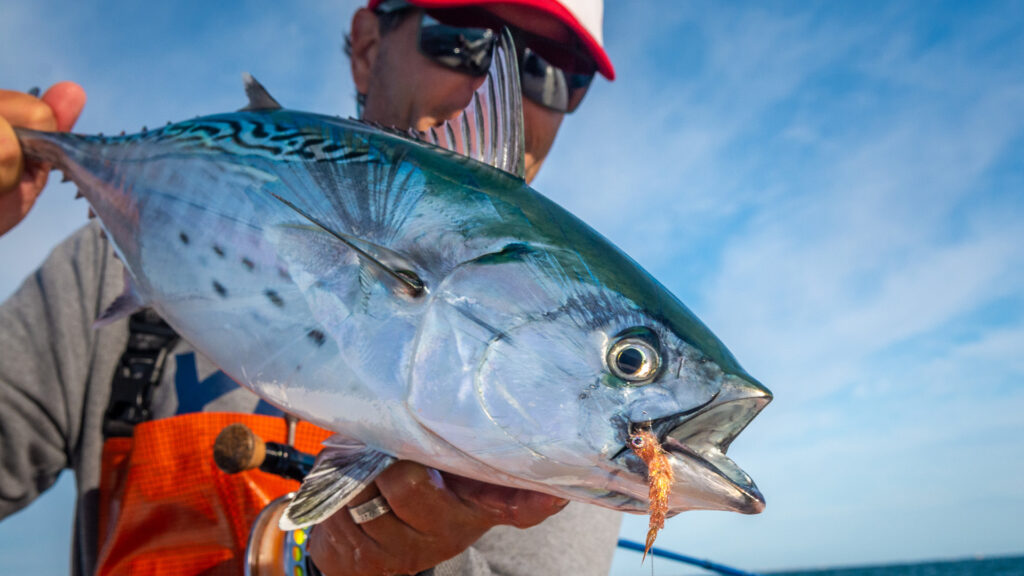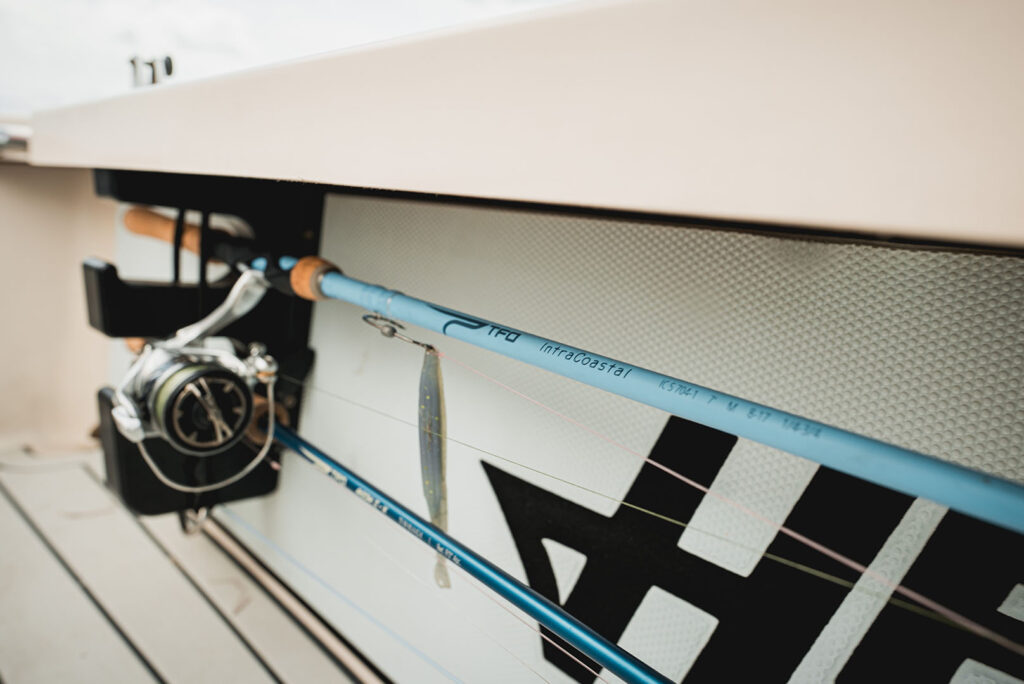Summer time is topwater time! Most people know me as a streamer junkie, but my favorite time to be on the water is when the smallmouth are looking up. Watching a big smallmouth swim up from the depths, inspect your fly, and sip it in like a brown trout sips on a tiny dry fly will have your heart pumping out of your chest.
Every fly angler should experience fishing topwater for smallmouth bass. Fishing the surface can be just as challenging as fishing below the surface, so let’s talk about some techniques that have helped me find success on the water. We’ll discuss prey items, flies that imitate those preys, and different ways to fish them and gear.
Prey Items
- Damselflies/Dragonflies: Both of these have a three stage life cycle: egg, nymph, and adult. Adults lay their eggs on or near the water, which means that smallmouth are accustomed to seeing these insects in one form or another. When the adults are mating near the water’s edge, it is a good time to throw a foam bug along the bank. Smallmouth will cruise into some pretty shallow water waiting for one of these bugs to make a mistake.
- Frogs: Spring and summer is when these amphibians start to emerge and become active, with the height of their activity being between the months of March and July. When their mating season runs into high gear, frogs will travel long distances in search of a mate, putting themselves in danger of coming into contact with a hungry bass. Frogs are both a high calorie and an easy meal – two things that a big bass loves.
- Mayflies: Yes! Bass eat mayflies too. Bass, like trout, can key in on a particular mayfly hatch and be just as stubborn if you don’t have the right pattern. Keep an eye on your local trout hatch chart and make sure that you have a couple patterns with you on the river. Especially hatches such as the Green Drake, the White Fly, the Light Cahill, and the Slate Drake.
Flies
- Ol’ Mr. Wiggly: This was designed by Charlie Piette and is by far my most productive pattern when it comes to low clear water situations. Made out of foam and lots of rubber legs, it resembles an alien more than anything. It lands softly on the water and with just a twitch of your rod tip, the legs will dance like crazy – making it irresistible to a hungry bass. If you see damselflies, dragonflies, and grasshoppers near the water’s edge, it is time to bring out the wiggly!
- Poppers/Divers: These patterns are meant to imitate frogs, mice, or even a dying baitfish struggling on the surface. All are high calorie meals and bass know that it is worth the risk for the reward. Carry a variety of different colors to imitate your local population. Presentations of these patterns can vary depending on water conditions. Sometimes you will see anglers stripping a diver or popper aggressively. This tactic works in some situations like off color water, or trying to call the bass up in the water with a lot of depth. However, most of the time you want to give your pattern soft strips without the loud pop – especially when the water is low! Big bass do not get big by being dumb. If it looks unnatural they will reject it every time.
- Dry Flies/Foam Bugs: During the summer, there is a plethora of different mayflies and other insects that use your water system as a part of their lifecycle. Bass will take advantage of any easy opportunity to fill their belly, even when it comes to eating a mayfly off the surface. So, it is better to be prepared and carry a handful of dry flies with you just in case. Also, it is a good idea to carry a variety of hoppers, dragonflies, damselflies, and beetle patterns. I like tying these patterns with foam because they will float all day.

Smallmouth bass on a foam fly pattern. // Photo: Ryan Rachiele
Popper-Dropper Technique
The Popper-Dropper technique is a great one to use and I have had a lot of success with it. Fishing a small popper and attaching a small nymph or crayfish off the back is a great way to raise your chances when the bass are really spooky. The popper acts like an indicator in a way. Most of the time the popper will work to get the bass attention and then they will eat the dropper fly. This is a great presentation for pressured waters.

An assortment of topwater flies for smallmouth bass. // Photo: Ryan Rachiele
Line/Leader Setup
Summertime usually means lower water with flows and crystal clear clarity. This means that longer and more precise casts will be the name of the game. You will need a leader set up of at least 9 foot, but could use up to 10 foot. I normally try to get away with using a 12 lb test for the tippet portion of my leader. If I am getting refusals or spooking fish I will bump it down to 10 lb or 8lb. 8lb being the lowest test I will use because using anything less than that is like asking to lose fish.
As for fly line, there are a few companies that have designed lines specifically for the bass bug game – helping you cast wind resistant poppers and foam bugs with ease. Lines like these have an aggressive shooting head to help turn over big bugs. On that same note, these aggressive lines can hurt more than help in low water situations from slapping down on the water too hard. Look for a line with a longer shooting head which will help you in those precise presentations.
Rod/Reel Setup
- LK Legacy: The LK Legacy in a 7wt (TF 07 90 4 LK) is such a versatile road in TFO’s lineup. I can go from shooting heavy compact sinking line to precise casts with floating line with ease. It is light in your hand and it is a breeze to cast. A true workhorse that I find myself reaching for on every outing.
- BVK SD II Fly Reel: I abuse these reels almost daily and they hold up trip after trip. After being drug through the mud, thrown into vehicles, and tumbles along rocks, the BVK SD still performs flawlessly every single time. Light and durable make it a perfect match for a day full of precise casting.

The LK Legacy and BVK SD lll is an excellent set up for chasing smallmouth on the fly – topwater or streamers. // Photo: Cameron Mosier
Conclusion
Smallmouth on the surface can be a tough puzzle to figure out oftentimes leaving you with more questions than answers. Once you start putting the pieces together, there is nothing else like it. Having the right gear and the knowledge about the prey that you are trying to imitate will help you crack that code. Watching a giant smallmouth swim up, inspect your foam bug or popper, and eat it like it’s the real thing is the best way to spend a summer day!
Blog written by TFO Ambassador Ryan Rachiele (Instagram: @streamerjunkie17). When not fishing, you can also find him working at Wellsboro, Pennsylvania shop Wellsboro Tackle Shack. Find out more about Ryan here.
![]()






